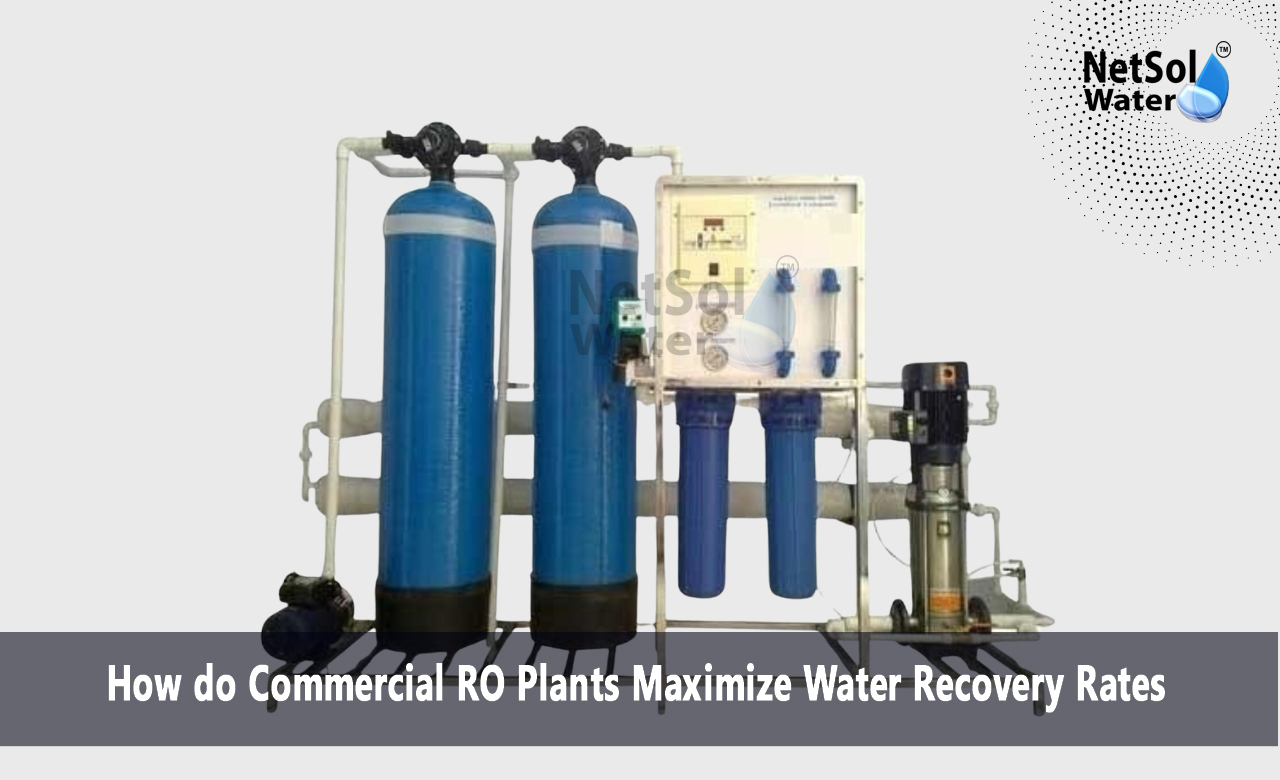How do Commercial RO Plants Maximize Water Recovery Rates?
Reverse osmosis technology is used as one of the significant steps in wastewater treatment and a key process in generating good quality of water for uses such as commercial and industrial purposes as well as domestic uses. RO plant performance is arguably measured by the recovery rate, which states the extent of feed water converted into acceptable permeate. Higher recovery rates in large scale commercial RO plants are crucial in aspects of water conservation, cost of operation, and the environment impact.
We will also discuss the methods and techniques of water recovery used by commercial RO plants. The factors which determine recovery rates, new and improved technologies of RO and measures which can be taken to enhance the effectiveness of RO will also be covered.
Parameters Influencing the Water Recovery Levels in Commercial RO Plants
1. Feedwater Quality: Feed water quality is one of the factors that have a direct influence on the recovery of the RO plant. Some of the contaminants that have a negative impact in the reduction of RO process recovery rate may include; high TDS, organic matter as well as pathogenic bacteria. These pre-treatment unit processes include coagulation, sedimentation, filtration and disinfection, this enhances the pretreatment unit and the overall efficiency of the RO plant in the removal of the mentioned contaminants.
2. RO Membrane Performance: Recovery rate depends on the performance of the RO membranes in which the membranes used in this study were selected on the basis of their past performance. The choice of the membrane material and design also influences permeability and selectivity of the employed membranes and, consequently, the rate of recovery. Selecting the appropriate membrane for a certain process is important for the achievement of high water recovery efficiency.
3. Operating Pressure: The permeate flux and salt rejection depends on the operating pressure of the RO plant. Typically, operating pressures of a system directly influence the recovery rates; nevertheless, there is an abnormal pressure above which the overall effectiveness of the system decreases. Hence it is imperative to keep the operating pressure of the particular RO plant at the best level that can ensure the best recovery level.
4. Concentrate Rejection and Reuse: Brine and rejected contaminants are two forms of concentrate which constitute one of the largest waste streams of the RO plants. It is possible to reduce the concentrate flow and utilize the concentrate stream further to enhance the performance of the RO plant greatly.
Tools and Approaches used to Achieve Higher Water Reuse Rates
1. Spiral Wound RO Membranes: Spiral wound membranes are used most frequently in commercial plants and are the most common RO membranes. Membranes of the associated type have several layers of a semipermeable material coiled around a permeate tube. Thus the design increases the possibility of removing contaminants and also lactose recovery is enhanced.
2. Thin-Film Composite (TFC) Membranes: TFC membranes consist of an active thin film of polyamide and a supporting layer which is porous at the microscale. These membranes provide great salt rejection and higher permeability compared to other types of membranes, thus can lead to improved recovery rates.
3. Energy Recovery Devices (ERDs): Pressure exchangers and turbines are examples of ERDs that assist in the recycle of the energy wasted in the high-pressure concentrate stream to augment the permeate flow. This energy recovery can therefore result in higher recovery rates as well as lower operating costs.
4. Advanced Pre-treatment Technologies: To enhance the removal efficiency of pollutants and performance of RO plant, it is possible to apply ultrafiltration, nanofiltration, and membrane bioreactors as the advance pre-treatment facilities. These technologies can help the recovery rate of water by minimizing the feedwater contaminated materials.
5. Optimal Operating Conditions: Maintaining positive conditions for the RO plant is important in order to achieve the highest rates of water recovery. This includes having the right operating pressure, having the right feed water flow rate, and analyzing the membrane condition. The components of the RO plant should be well-maintained and cleansed for at least once a week for efficiency to be maintained.
6. Concentrate Minimization and Reuse: Minimizing the concentrate flow through processes like concentrate re-mineralization, ion exchange, or evaporation crystallization can assist in the recovery of many valuable resources, from the reject stream. It is also recommended that the treated concentrate stream is recycled to other non-portable uses such as watering of gardens to increase the overall recovery of the RO plant.
Conclusion
Achieving high plant recovery in commercial RO plants is important for efficient water use, optimum utilization of funds and least offense to the ecosystem. Having such understanding of the factors that influence the recovery rates and by adopting modern technologies as well as effective strategies, the efficiency of the RO plants can be enhanced so as to realize higher recovery rates. Applying standard procedures like pre-treatment, operating condition, and concentrate recycling will help in achieving major improvement on water recovery rates to enhanced RO plant at commercial level.
Do you need an advice or assistance on selecting the best water and waste water treatment unit? We have solutions for all your problems!
Let us know your problem, our experts will make sure that it goes away.
For an assistance or related query,
Call on +91-965-060-8473 Or write us at enquiry@netsolwater.com



